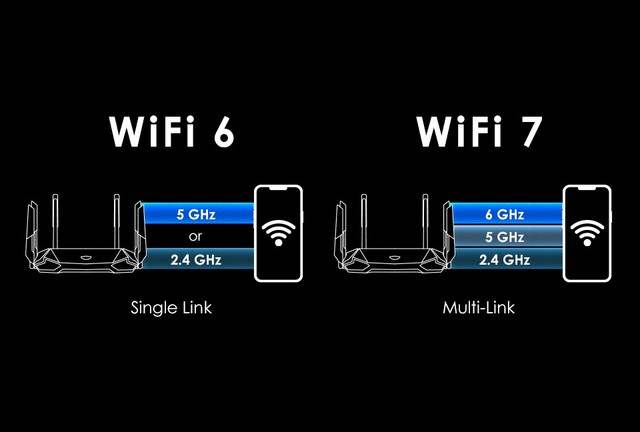In today's fast-paced digital world, the demand for seamless and high-speed internet connectivity has become an essential part of our daily lives. Wi-Fi technology has been a game-changer in providing wireless internet access, and with each new generation, it has continuously evolved to meet the growing demands of modern users. Wi-Fi 7, the latest iteration in the Wi-Fi family, promises to be a game-changer once again, offering unprecedented speeds and capabilities. In this article, we will explore the features of Wi-Fi 7 and how it stands out as the fastest and most advanced wireless connectivity standard to date.

1. Wi-Fi Evolution and Background:
Wi-Fi technology has come a long way since its inception in the late 1990s. It all began with Wi-Fi 802.11a and 802.11b, offering modest speeds in the range of 1-11 Mbps. Subsequent generations such as 802.11g, 802.11n, 802.11ac, and 802.11ax (Wi-Fi 6) brought significant improvements, with Wi-Fi 6 being the most recent widely adopted standard. However, as our connected world continues to grow, so does the demand for even faster and more reliable wireless connectivity.
2. Introducing Wi-Fi 7:
Wi-Fi 7, also known as 802.11be, is the next evolution in wireless technology, designed to address the ever-increasing need for higher speeds, lower latency, and better performance in congested environments. Expected to be released in the mid-2020s, Wi-Fi 7 is set to take wireless connectivity to new heights.
3. Speed and Throughput:
One of the most impressive aspects of Wi-Fi 7 is its blazing-fast speed. It aims to achieve a theoretical maximum data rate of up to 30 Gbps, which is three times faster than its predecessor, Wi-Fi 6. This astounding speed makes Wi-Fi 7 suitable for handling data-intensive tasks such as 8K video streaming, virtual reality, augmented reality, and real-time cloud gaming.
4. Spectrum Efficiency:
Wi-Fi 7 will operate in the 6 GHz band, which offers a more extensive and less congested spectrum compared to previous Wi-Fi generations. This results in improved spectrum efficiency, reduced interference, and a better overall wireless experience for users. Moreover, Wi-Fi 7 is expected to support channel widths of up to 320 MHz, further enhancing its capacity and performance.
5. Multi-User MIMO (MU-MIMO):
Building upon the advancements of Wi-Fi 6, Wi-Fi 7 will continue to utilize MU-MIMO technology. However, it will take it to the next level by supporting even more simultaneous users. This means that Wi-Fi 7 routers will be able to handle numerous devices efficiently, making it ideal for smart homes, offices, and public spaces with a high density of connected devices.
6. Lower Latency:
Latency refers to the time it takes for data to travel from the source to the destination. Wi-Fi 7 aims to reduce latency significantly compared to its predecessors, providing a more responsive and seamless experience for real-time applications such as online gaming and video conferencing.
7. Backward Compatibility:
While Wi-Fi 7 promises cutting-edge technology, it is also designed with backward compatibility in mind. This means that Wi-Fi 7 routers will be able to communicate with older devices using previous Wi-Fi standards, ensuring that all devices can connect and communicate seamlessly.
As technology continues to evolve, Wi-Fi 7 emerges as the epitome of wireless connectivity, offering unparalleled speed, capacity, and efficiency. With its impressive data rates, enhanced multi-user capabilities, and reduced latency, Wi-Fi 7 is set to revolutionize the way we connect to the internet and interact with our devices. While the full potential of Wi-Fi 7 is yet to be realized, it holds the promise of transforming our digital experiences and ushering in a new era of connectivity. As we eagerly anticipate its widespread adoption, Wi-Fi 7 undoubtedly stands as the fastest and most advanced wireless standard to date.
 Trolink Joint With Tuya to Make Iot Benefit Every Family
Trolink Joint With Tuya to Make Iot Benefit Every Family
 5 Key Indicators for WiFi Module Selection You Have to Know !
5 Key Indicators for WiFi Module Selection You Have to Know !
 IOT module is the brain of smart products
IOT module is the brain of smart products
 What is the signal coverage range of the WiFi module chip?
What is the signal coverage range of the WiFi module chip?